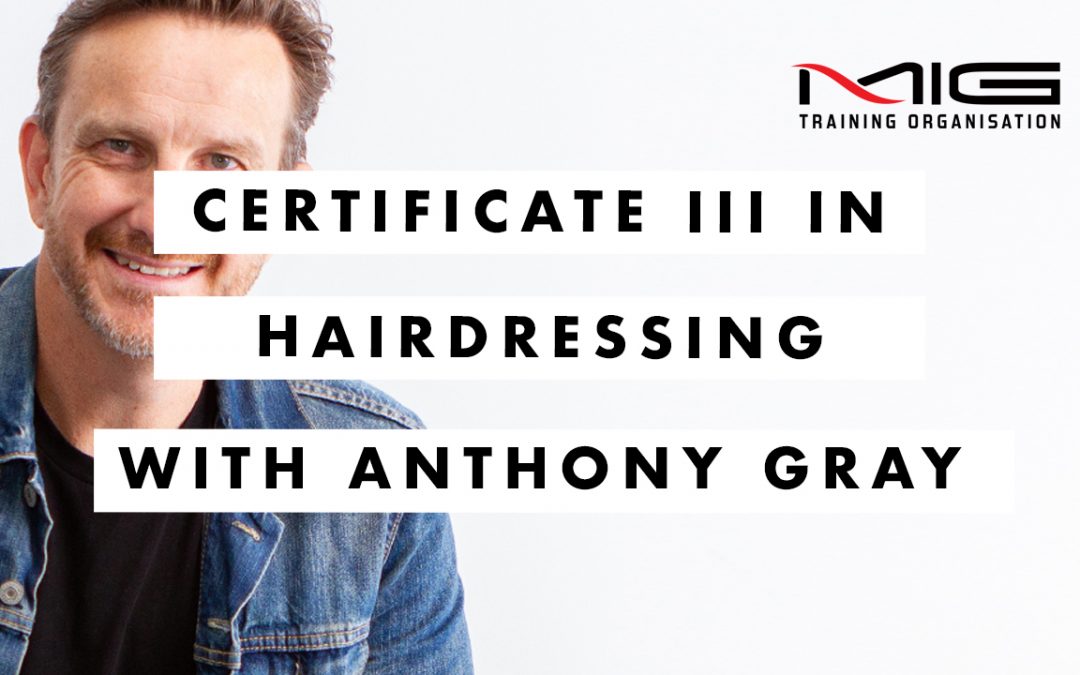How are you going? Anthony Gray from MIG Training here.
I thought I’d take a little bit of time today to try and break down the Certificate III in hairdressing. The formal training side of things can seem a little alien with what often happens in day to day salon life. I think the best way to combat this is to really understand, I suppose, what’s in the certificate III; so it helps you align a little closer what happens in the training of your staff in salon with then what happens at college or in the formal part of their training.
The qualification is broken down into 28 units, of which there’s 21 must do’s or core, followed by seven electives. In essence, there’s six main areas in my mind: safety and sustainability, basin and design, salon craft and service, cutting, color, and chemical. That helps me to make sense of all 28 of those units. When you look at them in a little bit more detail, safety and sustainability covers, sustainable work practices, hygiene, tools and equipment. Basin and design, obviously shampoo and basin services, massage techniques, styling, braiding and upstyles. Salon service and salon culture is around communication, front of house salon financial transactions, providing services and being able to be part of a team and build a client base. Cutting is broken down into basic cutting structures, so cutting one length, graduation layers, and then over comb techniques, and then bringing all them together to be able to then create combination cuts. Colors delivered through four units. So basic color and lighten, full and partial highlighting, neutralising colors and tones and then on scalp services, so bleach and retouch services.
Then rounding it out as chemical, so there’s straightening and relaxing here with chemical treatments. Obviously, this one can be a difficult one and can be problematic in training. But again, it’s part of the package that we’re dealing with. Perming and protein are now electives. And we find that probably only roughly 25% of salons we deal with use these units now because it’s not a service that they offer as much as they once did. That gives you a brief overview of the package.
Now each of those six areas contain a number of units. And they’re all building blocks, as I’ve said. But the real value comes is when you take those ingredients and you understand them, and you line those ingredients up with the way you deliver your training in house. Once the training in house aligns closely with what’s delivered at college, the greatest value is seen from the development of those apprentices. And we see it time and time again, where if the training and knowledge component matches their in-salon practical component then they move forward much quicker than previously you would have thought. So we are lucky to work with many salons in Brisbane and Queensland. And we help them to build their teams and create training that lines up really well with the way they do business.
If you’d like some advice or want to look at the next steps in how to deal with and create great teams with some specialized formal training, we’d love to make contact. Give us a call. Thanks very much.

